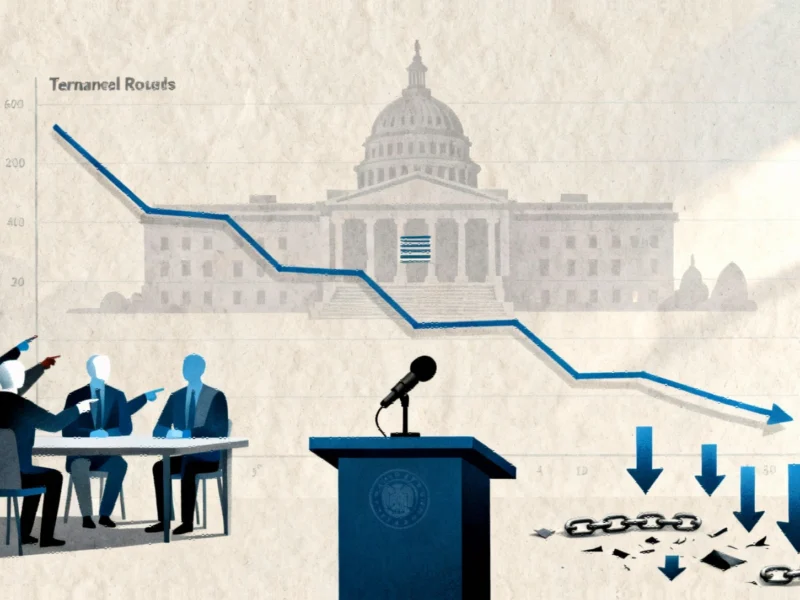Note: Featured image is for illustrative purposes only and does not represent any specific product, service, or entity mentioned in this article.
Parliament Sounds Alarm on Digital Governance Gap
Britain faces an imminent threat of repeated civil disturbances unless the government takes decisive action against the rapidly evolving landscape of online misinformation, according to a stark warning from MPs. The Science and Technology Select Committee has expressed grave concerns that ministerial complacency regarding social media content and emerging technologies could lead to a recurrence of the 2024 summer riots.
Chi Onwurah, the committee chair, stated that the government’s response to their comprehensive report on social media risks has been dangerously inadequate. “Public safety is at risk, and it is only a matter of time until the misinformation-fuelled 2024 summer riots are repeated,” she emphasized, highlighting the urgent need to address gaps in the Online Safety Act.
AI’s Accelerating Threat to Social Cohesion
The committee’s report, titled “Social Media, Misinformation and Harmful Algorithms,” reveals how inflammatory AI-generated images circulated widely following the tragic Southport stabbings that claimed three young lives. MPs warned that artificial intelligence tools have dramatically lowered barriers to creating sophisticated hateful, harmful, or deceptive content that can rapidly go viral.
Despite these concerns, the government maintains that new legislation isn’t necessary, arguing that AI-generated content falls within the scope of existing Online Safety Act provisions. However, this position contrasts with testimony from Ofcom officials, who acknowledged that AI chatbots are not fully captured by current regulations and called for further consultation with technology experts.
The rapid evolution of AI technology presents unprecedented challenges for content moderation systems originally designed for human-created material. As industry leaders continue to innovate, regulatory frameworks struggle to keep pace with these technological transformations that redefine how information spreads through digital networks.
Profit Models That Prioritize Engagement Over Truth
At the heart of the controversy lies what MPs describe as social media platforms’ “advertising-based business models” that allegedly incentivize the amplification of harmful content. The committee specifically highlighted how these systems enable “the monetization of harmful and misleading content,” including websites that spread misinformation about the Southport attacker’s identity.
The government has declined to establish a new regulatory body to address these advertising systems, instead pointing to existing initiatives aimed at increasing transparency in online advertising. This approach has drawn criticism from committee members who argue that without addressing the fundamental economic incentives, the spread of harmful content will continue.
Recent cybersecurity challenges in other sectors demonstrate how digital vulnerabilities can have real-world consequences, underscoring the need for robust regulatory frameworks. Meanwhile, defense industry developments show how other sectors are adapting to evolving digital threats.
Algorithmic Amplification: The Digital Megaphone Effect
Committee members expressed particular concern about how social media algorithms systematically amplify harmful content. These automated systems, designed to maximize user engagement, can inadvertently create echo chambers where misinformation spreads rapidly among like-minded individuals.
The government has delegated responsibility for researching algorithmic impacts to Ofcom, stating the regulator is “best placed” to determine necessary investigations. Ofcom has acknowledged conducting preliminary work on recommendation algorithms but recognizes the need for broader academic and research sector involvement to fully understand these complex systems.
This situation reflects wider market trends in technology regulation, where rapid innovation often outpaces governmental response capabilities. The gap between technological advancement and regulatory oversight represents a critical vulnerability in maintaining social stability.
Transparency Deficit in Digital Governance
In what some committee members view as a particularly concerning decision, the government rejected calls for an annual parliamentary report on the state of online misinformation. Officials argued that such transparency could potentially expose and hinder operations aimed at limiting the spread of harmful digital content.
This lack of regular accountability mechanisms troubles digital rights advocates and parliamentarians alike. Without systematic monitoring and reporting, they argue, it becomes difficult to assess whether countermeasures are effectively addressing the scale and evolution of the misinformation problem.
“The committee is not convinced by the government’s argument that the OSA already covers generative AI,” Onwurah stated, highlighting concerns that existing legislation may already be obsolete given the pace of technological change. “The technology is developing at such a fast rate that more will clearly need to be done to tackle its effects on online misinformation.”
The Path Forward: Regulatory Evolution or Social Regression?
The standoff between Parliament and the government highlights a fundamental challenge facing democratic societies worldwide: how to balance innovation, free expression, and public safety in the digital age. As AI tools become more sophisticated and accessible, the potential for malicious actors to exploit these technologies grows correspondingly.
What remains clear from the committee’s assessment is that partial measures and reliance on outdated regulatory frameworks may prove insufficient to prevent the conditions that sparked the 2024 disturbances. The intersection of algorithmic amplification, economic incentives, and emerging AI capabilities creates a perfect storm that demands comprehensive, forward-looking solutions.
Without addressing both the technological and economic dimensions of the misinformation ecosystem, experts warn that Britain—and other nations facing similar challenges—may find themselves trapped in a cycle of digital wildfires sparking real-world consequences. The question remains whether regulatory systems can evolve quickly enough to prevent history from repeating itself.
This article aggregates information from publicly available sources. All trademarks and copyrights belong to their respective owners.



